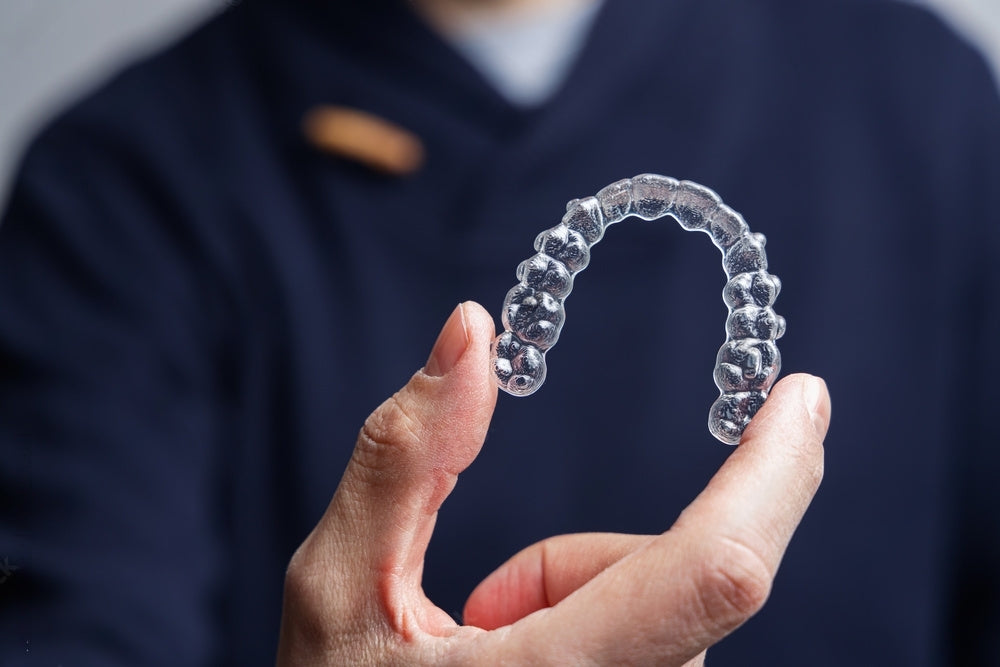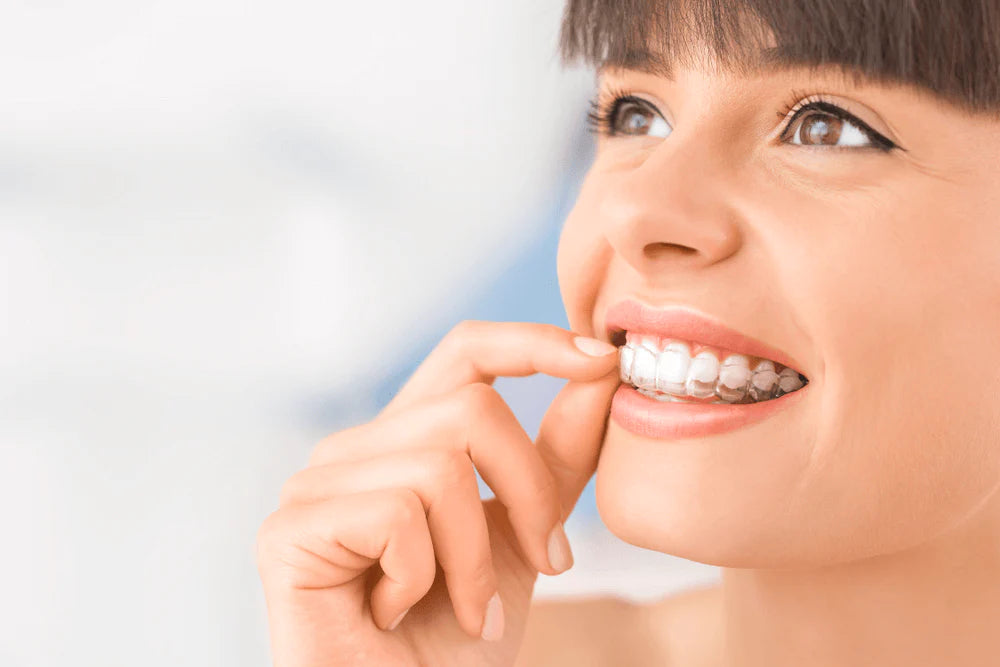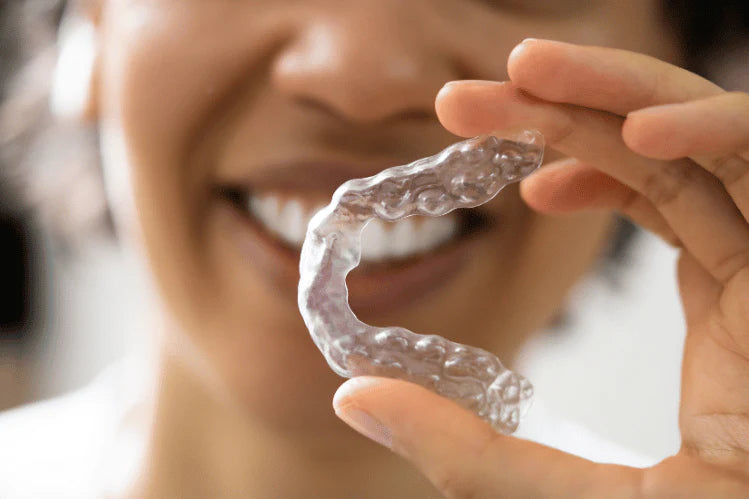A 22-year-old female patient was reported with a chief concern of anterior flaring of both jaws. Her main concern was her proclined upper teeth and difficulty in biting. She wanted to improve her smile by reducing the upper incisal visibility and the protruded facial appearance along with the leveling of the upper incisors. She was successfully treated with OrthoPath Clear Aligners with her chief complaint resolved and improved facial and smile aesthetics.
Invisible braces are becoming increasingly popular in Australia. Initially, it was thought that aligners could only treat a limited number of minor malocclusions but now their scope has increased. The following case study is an example of results and patient satisfaction achieved with OrthoPath Clear Aligners.

A 22-year-old female patient reported to a private practice with the chief concern of anterior crowding in both jaws. Her main concern was proclined front teeth and increased incisal visibility on smiling. She wanted to improve her smile by reducing the upper incisal visibility and the protruded facial appearance.

The patient did not have any relevant medical condition and her general health was good. She had not undergone any dental treatment before. A full orthodontic examination was carried out and records were organized including, intra-oral and extra-oral photographs, OPG, and lateral cephalogram.
Analysis revealed proclined upper and lower incisors with increased overjet with molars and canines in class I. Mild anterior crowding was present in the lower arch with disturbed leveling. The upper midline was shifted towards the left and the lower midline was centered.
Once the treatment plan was approved the aligner movement record form and an IPR form arrived from OrthoPath in three weeks.



Treatment Objectives
As per the patient's concern, the treatment objectives for Orthodontic treatment were:
- To improve the patient's smile.
- Alignment and leveling of both arches to achieve the ideal arch form.
- Reduce patient's overjet.
- Reducing overjet to facilitate biting.
The following treatment options were discussed with the patient in detail:
- Arch alignment with conventional braces.
- OrthoPath Clear Aligners for both upper and lower arches.
- Restorative treatment at upper anterior teeth for leveling (this option was already provided to her by an unqualified dentist).
The patient being 22 years old did not like the idea of using conventional braces as it would have been socially embarrassing for her. Restorative treatment would have done nothing to reduce the overjet of her anterior teeth. She wanted to treat the malocclusion in a hassle-free and invisible way that did not pose any social dilemma for her, therefore she chose OrthoPath Clear Aligners.
An Orthodontic treatment and diagnostic form were discussed with her in detail as well as the need for Interproximal tooth reduction (IPR) to create space for teeth alignment.
Treatment Progress
Orthodontic clinical records along with PVS impressions and PVS bite registration were sent to OrthoPath. A treatment plan and the IPR form including the treatment animations with the expected treatment outcome were provided by OrthoPath to be thoroughly evaluated and discussed with the patient.
After a discussion with the patient, the treatment plan provided by OrthoPath was approved without any modification. The patient was kept on zero aligners provided by OrthoPath. For this case, 18 upper and 28 lower aligners were required with IPR in the upper arch at the 6th stage.
The aligners were worn 22 hours per day and only removed while eating or cleaning teeth. Each upper and lower aligner was worn for 2 weeks before moving to the next set. The patient was seen every 2 weeks initially till he became comfortable with the aligner treatment. A lot of emphasis was made on keeping good oral hygiene and it was maintained and monitored with visits every 6 months. The case continued for the lower arch till all 28 aligners were utilized and then the patient was provided with a lower arch retainer.
Upon completing the full course of aligners, a thorough assessment of both the upper and lower arches was conducted to check for any remaining issues, as refinement aligners are available to address residual movements. The patient expressed satisfaction with the treatment outcome and opted not to undergo refinement.


As a result, the patient was provided with retainers to maintain the achieved results. The patient was instructed to wear the retainers full-time for the first two months and then at night for the last month.
The treatment was completed with OrthoPath Clear Aligners in 13 months. The patient was happy with the treatment outcome and there was no relapse found after the 6 monthly visits.
Aligners can provide an excellent option for treating malocclusion in adults where the biggest hindrance is age and social commitments. Aligners can treat moderate malocclusions and the biggest factor in the success of treatment is the patient's compliance and the dentist's vigilance in maintaining a firm eye on case progress.







